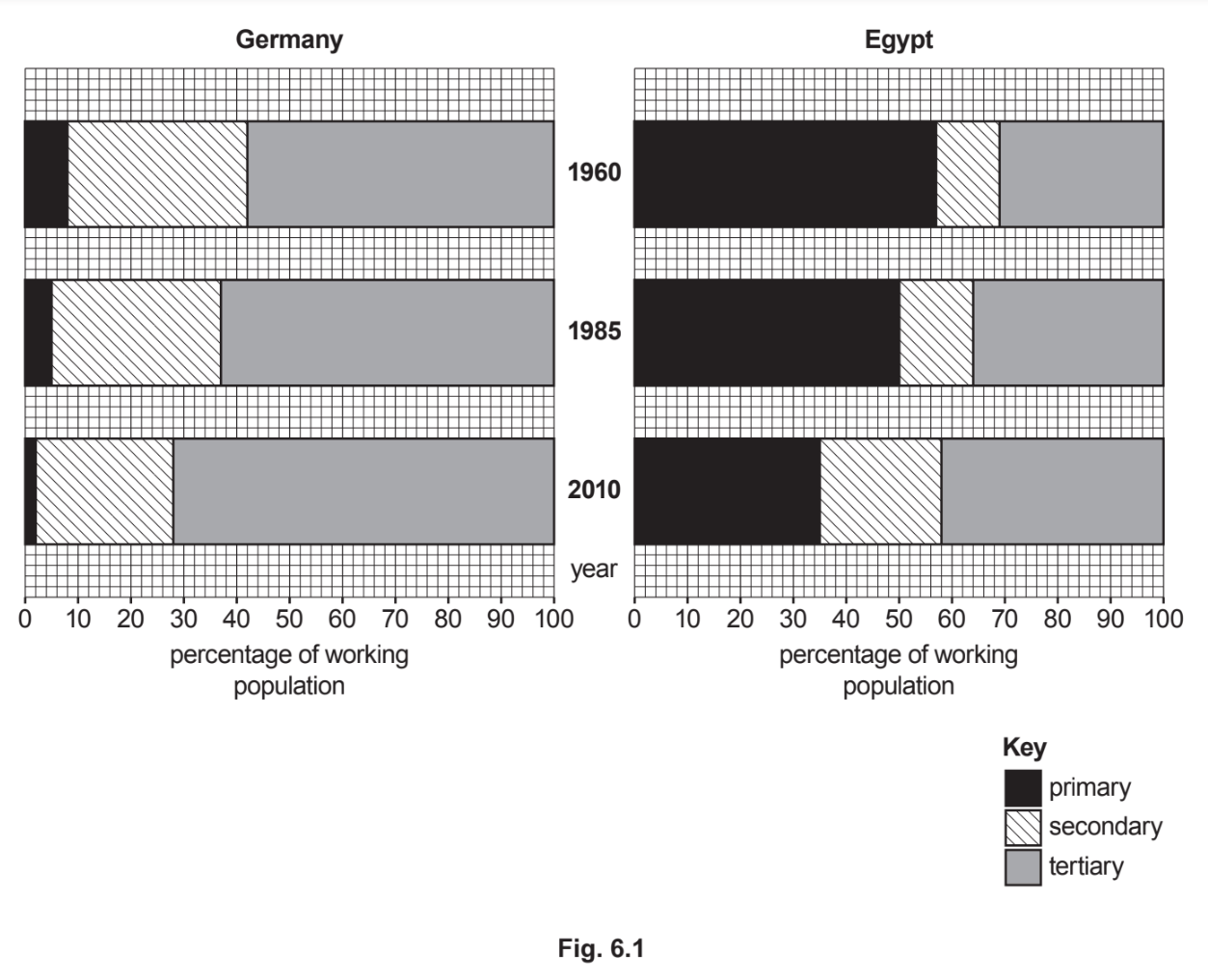Study Figs. 5.2, 5.3 and 5.4, which are photographs showing different employment sectors.

Fig. 5.2

Fig. 5.3

Fig. 5.4
Identify the employment sectors shown in each of Figs. 5.2, 5.3 and 5.4.
Did this page help you?
Syllabus Edition
First teaching 2025
First exams 2027
Exam code: 2217
Study Figs. 5.2, 5.3 and 5.4, which are photographs showing different employment sectors.

Fig. 5.2

Fig. 5.3

Fig. 5.4
Identify the employment sectors shown in each of Figs. 5.2, 5.3 and 5.4.
How did you do?
Did this page help you?
Identify what is meant by an economic sector.
The chain of production in manufacturing
An economic shift in employment
A classification of types of employment
A classification of employment structures
Choose your answer
Did this page help you?
Study Fig. 6.1 shows the employment structures of Germany (an HIC) and Egypt (an LIC) in 1960, 1985, and 2010.

What percentage of the working population was employed in the primary sector in Egypt in 1960?
How did you do?
Identify one similarity and one difference between the employment structures of Germany and Egypt in 2010.
Similarity .......................
Difference .........................
How did you do?
Suggest reasons for the decline of employment in secondary industry in Germany since 1985.
How did you do?
Did this page help you?
Identify one physical and one economic factor that affects an industry's location?
How did you do?
Did this page help you?
Explain why the employment structure of a country is a good indicator of its level of development.
How did you do?
Did this page help you?
Explain why employment in the primary sector is high in many low-income countries (LICs).
How did you do?
Did this page help you?
Suggest reasons for the decline of secondary industry in many high-income countries (HICs).
How did you do?
Did this page help you?
Study Fig. 1, the Clark-Fisher model.

Using Fig. 1, describe how employment structure changes as countries develop.
How did you do?
Did this page help you?
Suggest reasons why MICs often experience rapid growth in secondary sector employment.
How did you do?
Did this page help you?
Evaluate the usefulness of employment structure data in showing a country’s level of development.
How did you do?
Did this page help you?
Assess the impacts of deindustrialisation on people and places in HICs.
How did you do?
Did this page help you?
Evaluate the extent to which globalisation is responsible for changing employment structures in MICs?
How did you do?
Did this page help you?
Evaluate the social and economic impacts of growth in the tertiary and quaternary sectors in HICs.
How did you do?
Did this page help you?
Assess the extent to which mechanisation changes employment structures in LICs and MICs.
How did you do?
Did this page help you?